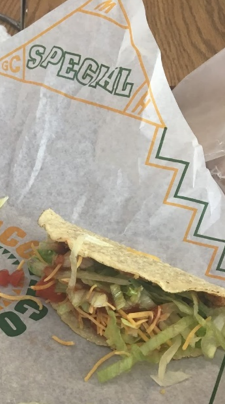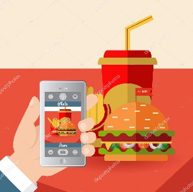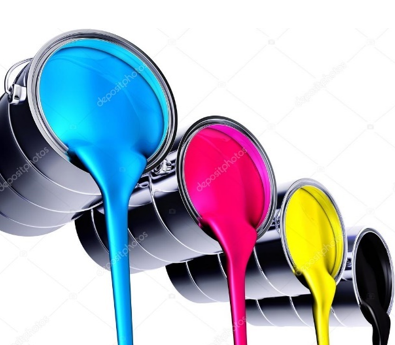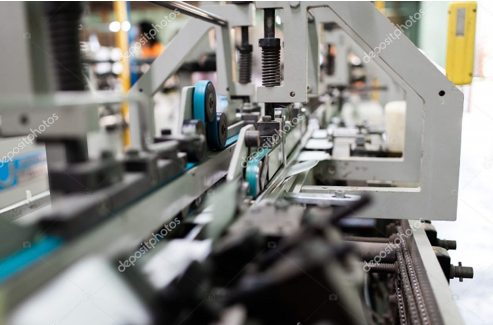So, in addition to taco fillings, what else are your customers eating? Printing ink? Coatings? Logos may not have calories, but they can have other less-than-appetizing contents.
Reinforce Your Brand Through Food Safe Printing
 In the restaurant and food service industries, marketing branding is crucial for companies who want to build – or reinforce – brand loyalty. Printing logos and other identifying marks on packaging is common – and effective. Studies show that promotional products such as personalized placemats tend to leave people with a favorable impression of the company marketing its services.
In the restaurant and food service industries, marketing branding is crucial for companies who want to build – or reinforce – brand loyalty. Printing logos and other identifying marks on packaging is common – and effective. Studies show that promotional products such as personalized placemats tend to leave people with a favorable impression of the company marketing its services.
Every time a place of business serves a customer food, they want customers to remember the experience and hopefully repeat it. They want to reinforce their brand. Historically, consumers needed 5-7 impressions before they would recognize a brand, though some marketers now put that figure much higher due to the constant messaging bombardment – with closer to 20-30 touches now required to establish brand identity.
Restaurants and food service companies have many opportunities to take advantage of branding real estate – from disposable placemats and tray liners to basket liners and food wraps. Company logos and taglines are common, while some use identifying information for the product (example: “Turkey Club Sandwich” or “Double Cheeseburger”).
It’s also common to emblazon food service disposables with your brand’s color or employ seasonal patterns for holidays and other special occasions. It’s a proven way to create ambiance and engage in cross-promotional marketing opportunities.
 There is also evidence that food service branding is traveling far beyond the dining table. A study by Maru/Matchbox found that almost 70% of millennials admit to taking photos of their food before eating, with Generation X not far behind. Often, these images are posted to social media accounts. While there is no data yet for Generation Z, conventional wisdom dictates their numbers are at least as high. So, with your food making regular appearances on Instagram, TikTok, Facebook and other social media sites, visual efforts at branding have become even more critical.
There is also evidence that food service branding is traveling far beyond the dining table. A study by Maru/Matchbox found that almost 70% of millennials admit to taking photos of their food before eating, with Generation X not far behind. Often, these images are posted to social media accounts. While there is no data yet for Generation Z, conventional wisdom dictates their numbers are at least as high. So, with your food making regular appearances on Instagram, TikTok, Facebook and other social media sites, visual efforts at branding have become even more critical.
All of this omnichannel marketing has one thing in common: ink is printed on food packaging materials. But is the ink being used safe for direct food contact?
Choosing the Right Ink for Regulatory Compliance
 Obviously, no one sets out to eat placemats or food wrappers. But it’s inevitable that food will come in contact with these printed materials. Diners may use wrappers or baskets as plates or rewrap food without caring whether the printed side is facing the food. Food may be dropped onto paper menus only to be picked up and eaten by the diner. Many foodservice providers will print menus with games for children, who will touch the surface of the mat extensively, and then pick up a sandwich or a hot dog with those same fingers.
Obviously, no one sets out to eat placemats or food wrappers. But it’s inevitable that food will come in contact with these printed materials. Diners may use wrappers or baskets as plates or rewrap food without caring whether the printed side is facing the food. Food may be dropped onto paper menus only to be picked up and eaten by the diner. Many foodservice providers will print menus with games for children, who will touch the surface of the mat extensively, and then pick up a sandwich or a hot dog with those same fingers.
Constituents from printing inks or coatings on tray liners, baskets, wrappers and clamshell containers can potentially migrate into food. With the public increasingly tuned into the health risks of synthetic chemicals, it’s important to reassure them that food wrappings are safe – even with regular exposure. (After all, Taco Tuesday does come around once a week.) If you are printing food wrappings and other peripherals such as placemats with ink, it’s important you’re using inks designed for direct food contact (DFC).
No-Tox Is the Safest Solution for Food Packaging Printing
Colorcon’s No-Tox line of products for packaging printing can be used with a variety of printing methods, including offset, water-based flexographic, solvent based flexographic, water based gravure, solvent based gravure, heatset web and web no heat. No-Tox inks are indirect and direct food additives that are registered with the FDA, and are safe alternatives to conventional inks that require additional protective coatings.
line of products for packaging printing can be used with a variety of printing methods, including offset, water-based flexographic, solvent based flexographic, water based gravure, solvent based gravure, heatset web and web no heat. No-Tox inks are indirect and direct food additives that are registered with the FDA, and are safe alternatives to conventional inks that require additional protective coatings.
Colorcon has more than 50 years of experience in creating FDA- and EU-compliant ink design and colors that adhere to food safety standards for both direct and indirect food contact as defined by the FDA in Title 21 of the United States Code of Federal Regulations (21 CFR) and similar regulations in the EU. With membership to the FTA, NAPIM and BCF, Colorcon produces inks for customers in more than 40 countries. No-Tox printing inks are ideal for food packaging, labels, cartons, pouches, promotional inserts and printed coupons that directly contact food and confectionery surfaces, and Colorcon offers guarantees that all components follow 21 CFR regulations.
Visit the No-Tox website for more information.
 Don Grieco is the Business Development Manager for the Colorcon No-Tox Products Division. He manages accounts in Mexico, Asia, and the northern region of the US. Since joining Colorcon in 2003, Don has held several customer-facing roles including Inside Sales and Manager of the No-Tox Customer Service group. He is a go-to resource for customers seeking guidance on direct contact compliant inks and coatings in the food, medical and pharmaceutical industries.
Don Grieco is the Business Development Manager for the Colorcon No-Tox Products Division. He manages accounts in Mexico, Asia, and the northern region of the US. Since joining Colorcon in 2003, Don has held several customer-facing roles including Inside Sales and Manager of the No-Tox Customer Service group. He is a go-to resource for customers seeking guidance on direct contact compliant inks and coatings in the food, medical and pharmaceutical industries.